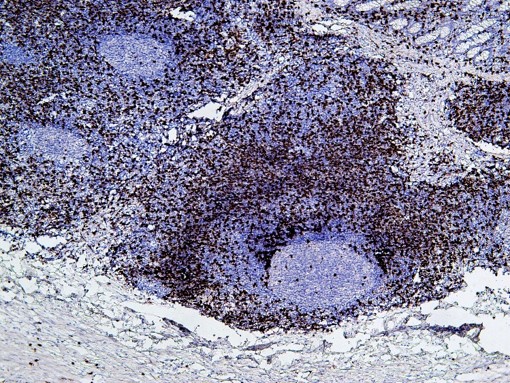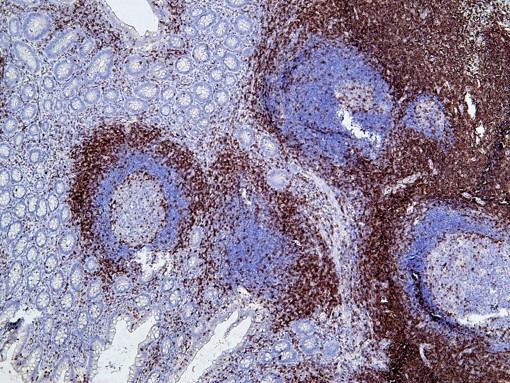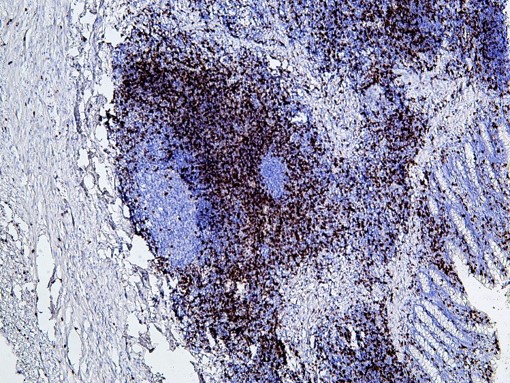GFAP (ABT331) IHC kit
- Catalog No.:IHCM6951
- Applications:IHC
- Reactivity:Human; Rat;
- Target:
- GFAP
- Fields:
- >>JAK-STAT signaling pathway
- Gene Name:
- GFAP
- Protein Name:
- GFAP
- Human Gene Id:
- 2670
- Human Swiss Prot No:
- P14136
- Immunogen:
- Synthesized peptide derived from human GFAP AA range: 300-432
- Specificity:
- The antibody can specifically recognize human GFAP protein.
- Source:
- Mouse, Monoclonal/IgG1, Kappa
- Purification:
- The antibody was affinity-purified from mouse ascites by affinity-chromatography using specific immunogen.
- Storage Stability:
- 2°C to 8°C/1 year
- Other Name:
- Glial fibrillary acidic protein (GFAP)
- Background:
- This gene encodes one of the major intermediate filament proteins of mature astrocytes. It is used as a marker to distinguish astrocytes from other glial cells during development. Mutations in this gene cause Alexander disease, a rare disorder of astrocytes in the central nervous system. Alternative splicing results in multiple transcript variants encoding distinct isoforms. [provided by RefSeq, Oct 2008],
- Function:
- alternative products:Isoforms differ in the C-terminal region which is encoded by alternative exons,disease:Defects in GFAP are a cause of Alexander disease (ALEXD) [MIM:203450]. Alexander disease is a rare disorder of the central nervous system. It is a progressive leukoencephalopathy whose hallmark is the widespread accumulation of Rosenthal fibers which are cytoplasmic inclusions in astrocytes. The most common form affects infants and young children, and is characterized by progressive failure of central myelination, usually leading to death usually within the first decade. Infants with Alexander disease develop a leukoencephalopathy with macrocephaly, seizures, and psychomotor retardation. Patients with juvenile or adult forms typically experience ataxia, bulbar signs and spasticity, and a more slowly progressive course.,function:GFAP, a class-III intermediate filament, is a cell-spe
- Subcellular Location:
- Cytoplasmic
- Expression:
- Expressed in cells lacking fibronectin.
- June 19-2018
- WESTERN IMMUNOBLOTTING PROTOCOL
- June 19-2018
- IMMUNOHISTOCHEMISTRY-PARAFFIN PROTOCOL
- June 19-2018
- IMMUNOFLUORESCENCE PROTOCOL
- September 08-2020
- FLOW-CYTOMEYRT-PROTOCOL
- May 20-2022
- Cell-Based ELISA│解您多样本WB检测之困扰
- July 13-2018
- CELL-BASED-ELISA-PROTOCOL-FOR-ACETYL-PROTEIN
- July 13-2018
- CELL-BASED-ELISA-PROTOCOL-FOR-PHOSPHO-PROTEIN
- July 13-2018
- Antibody-FAQs
- Products Images
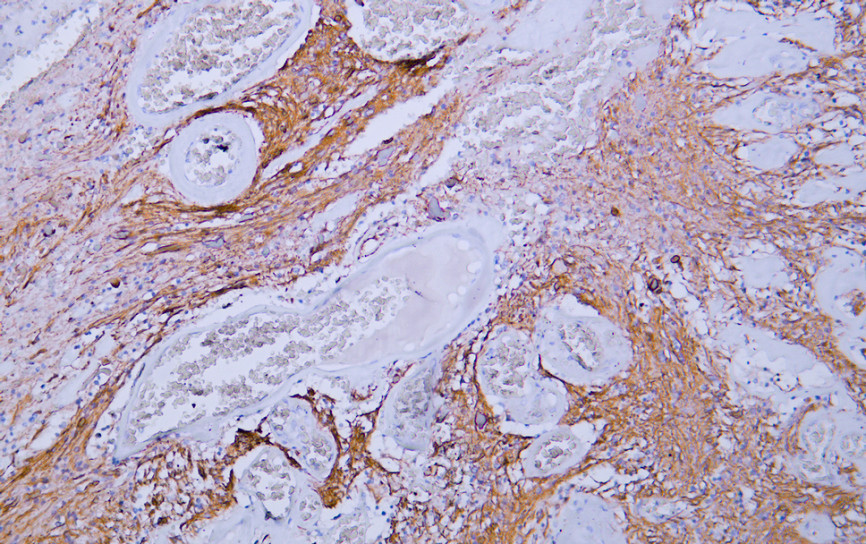
- Human astrocytoma tissue was stained with Anti-Glial Fibrillary Acidic Protein (GFAP) (ABT331) Antibody
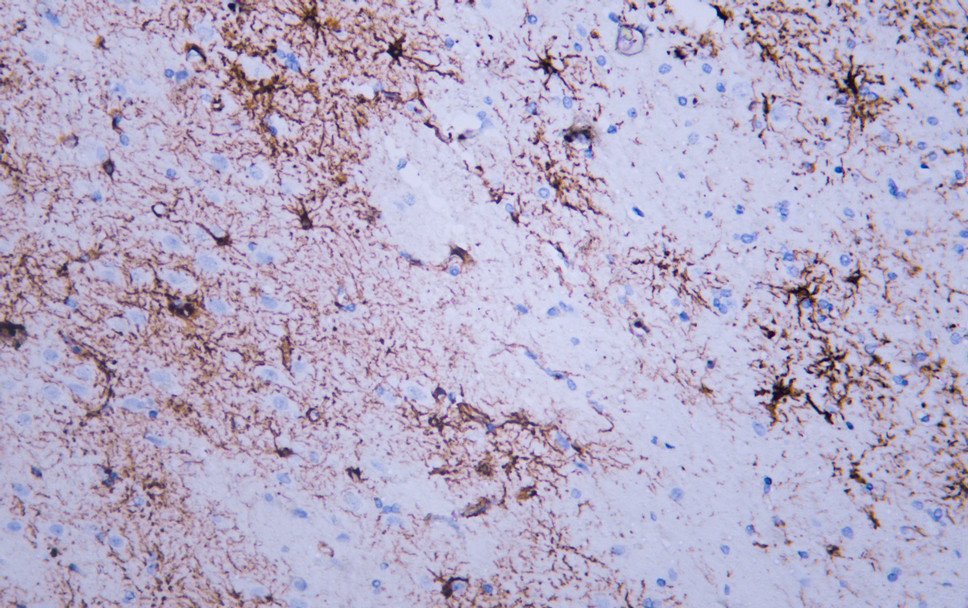
- Human cerebrum tissue was stained with Anti-Glial Fibrillary Acidic Protein (GFAP) (ABT331) Antibody
